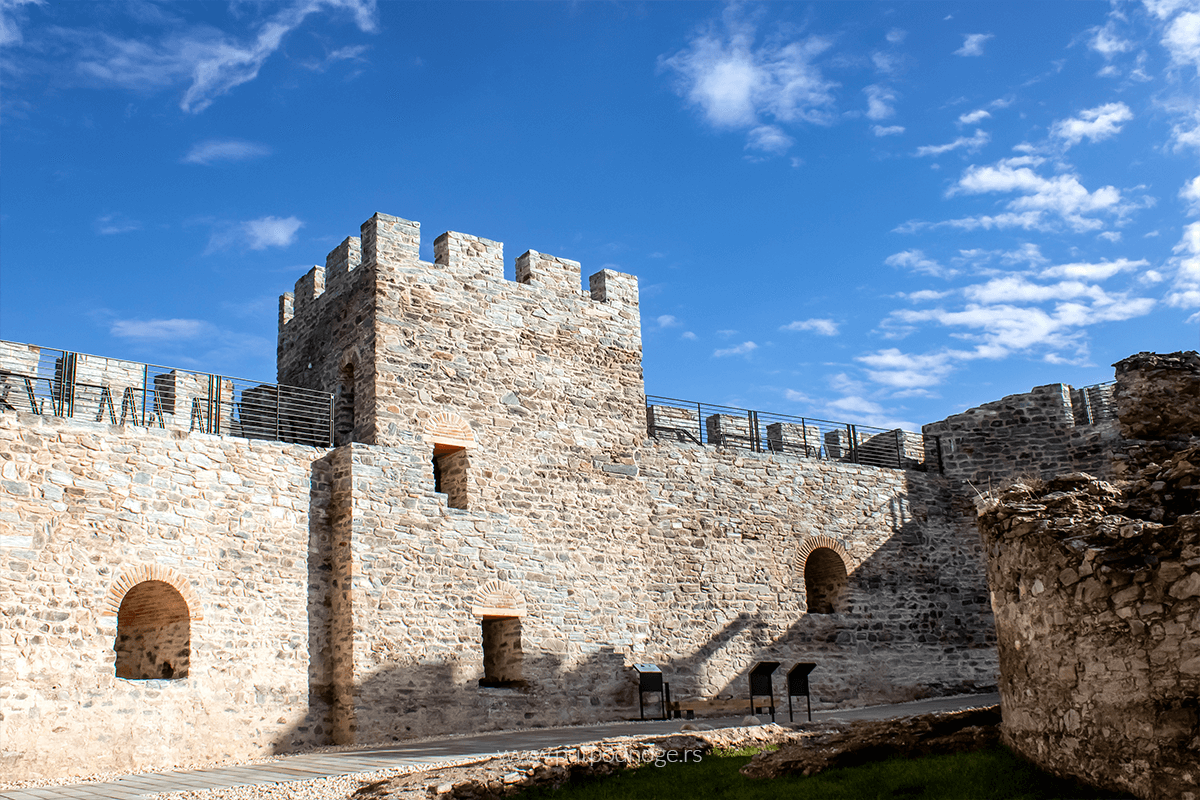
Ram Fortress – Where the Danube Becomes Calm
Ram Fortress, one of the most beautiful examples of medieval military architecture on the Danube, has just reopened to visitors after a carefully executed reconstruction. We seized the opportunity to visit it in its winter attire, on a day when the light particularly accentuated the powerful blue-green hue of its walls, built from schist that is 600 million years old.
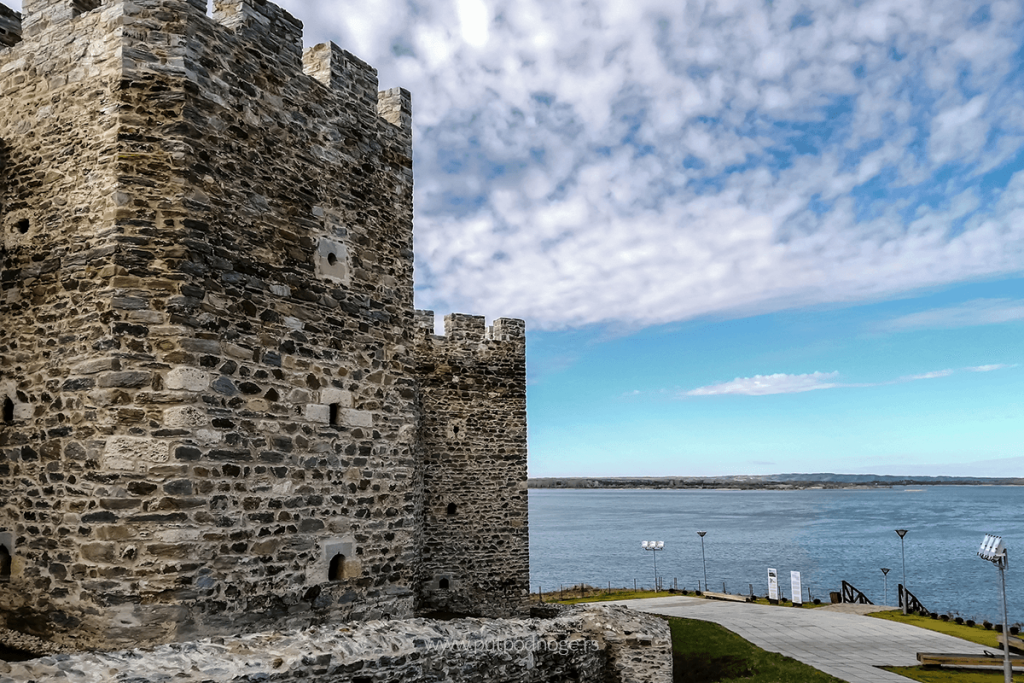
A View from the Banks of Ram
The bank at Ram, higher than the one on the opposite side of the river, offers a striking view of the wide Danube. Although the river is at its widest near Golubac (reaching up to 6 km), here at Ram it stretches an impressive 4.1 km. Contrary to what some might think, it is not Romania across the river, but the expansive region of Banat and the Deliblato Sands.
They say that it is precisely here that the Danube becomes tame and calm. Four rivers flow into it at this point – the Karaš and the Nera from the left, and the Morava and the Mlava from the right. This natural tranquility has, for centuries, attracted those wishing to cross the river. Even today, a ferry operates just below the fortress. The strategic importance of Ram even in Roman times is evidenced by a pontoon bridge built in 105 AD, also depicted on Trajan’s Column in Rome.
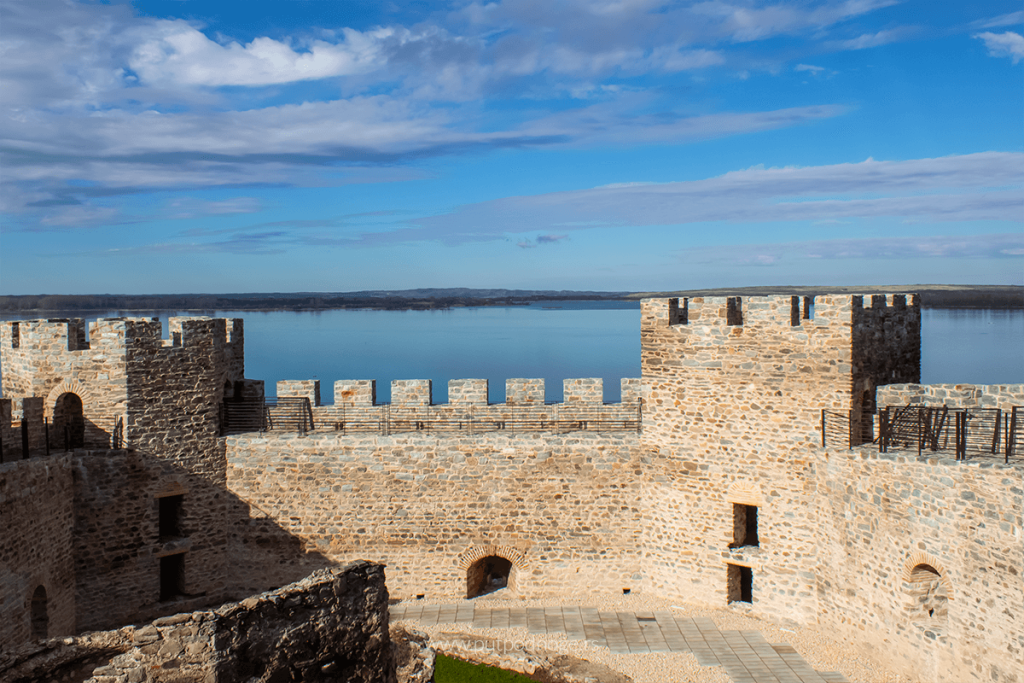
The Legend of the Sultan and the Prayer Rug
The fortress was built in 1483 by the order of Sultan Bayezid II, grandfather of the famous Suleiman the Magnificent. According to legend, the sultan, while traveling through the area, stopped to rest on a hill overlooking the Danube. He fell asleep on his prayer rug – ihram – and upon awakening, feeling rejuvenated, ordered a fortress to be built right there. It was named Ram, after the ihram.
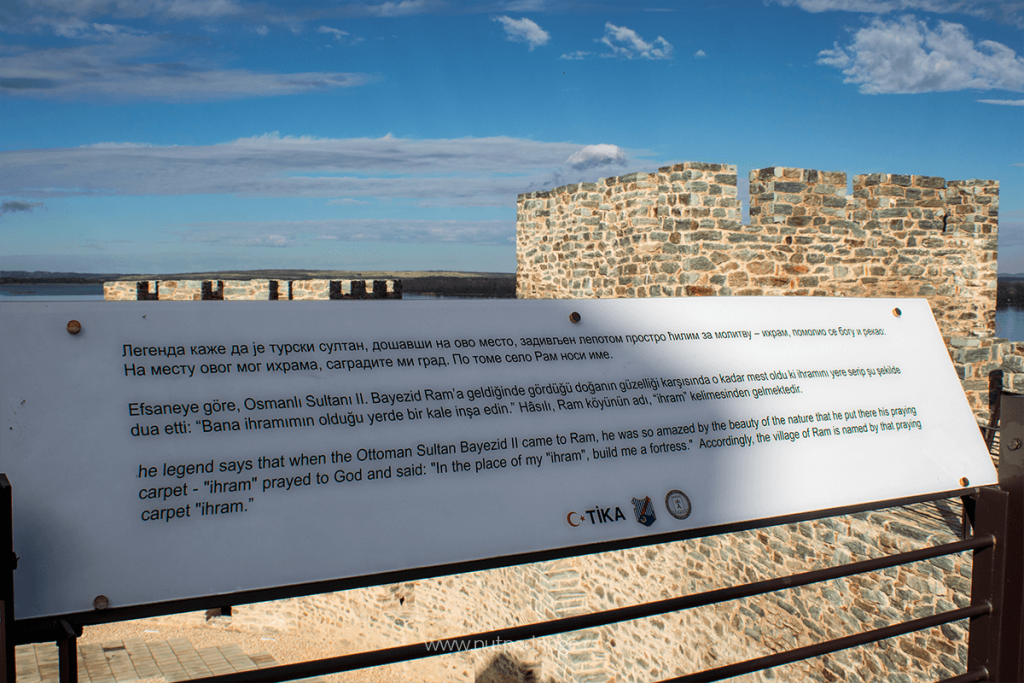
The First Artillery Fortress in Serbia
Ram Fortress is the first fortification in Serbia built specifically for combat with firearms. It boasts as many as 36 cannon openings – more than Belgrade’s Kalemegdan Fortress (which has 22) – arranged to cover all directions. The fortress consists of five towers connected by mighty ramparts.
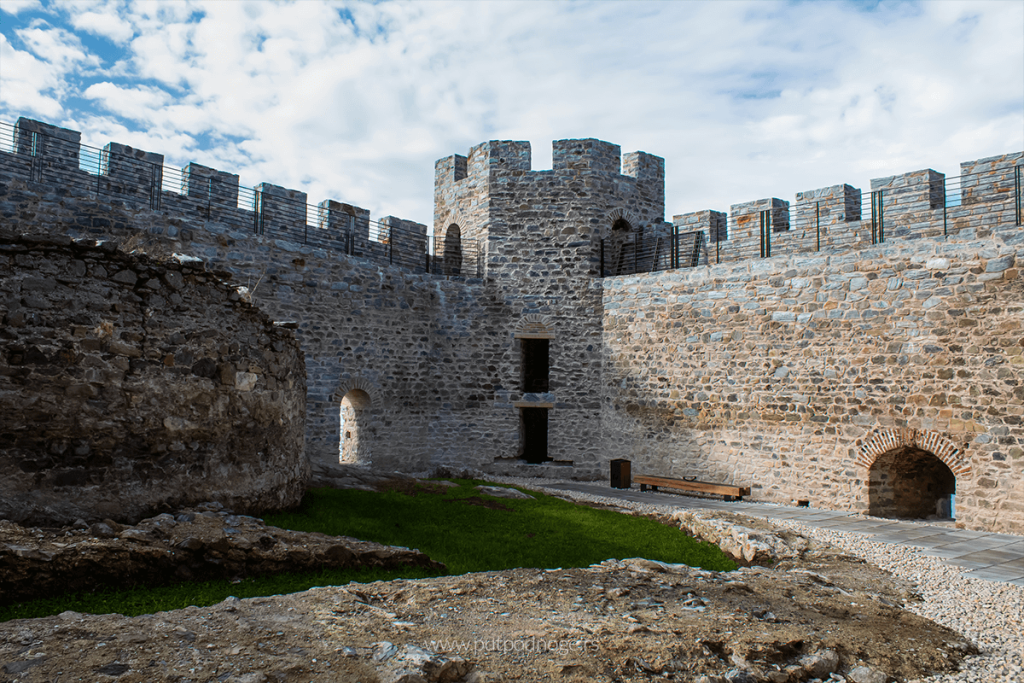
The Donjon Tower – The Heart of the Fortress
The main tower, which serves as the entrance to the fortress, is the Donjon – the tallest and most important tower. It housed the commanding officer and featured three floors and two platforms. Remarkably, it had a private latrine on the second floor – a luxury at the time. At the top of the tower is a machicolation – an opening through which boiling oil or stones were poured on attackers. Narrow passageways leading to the tower made it the last and strongest line of defense.
All towers were equipped with fireplaces for heating. Access to the upper floors was possible only via external staircases or wooden ladders.
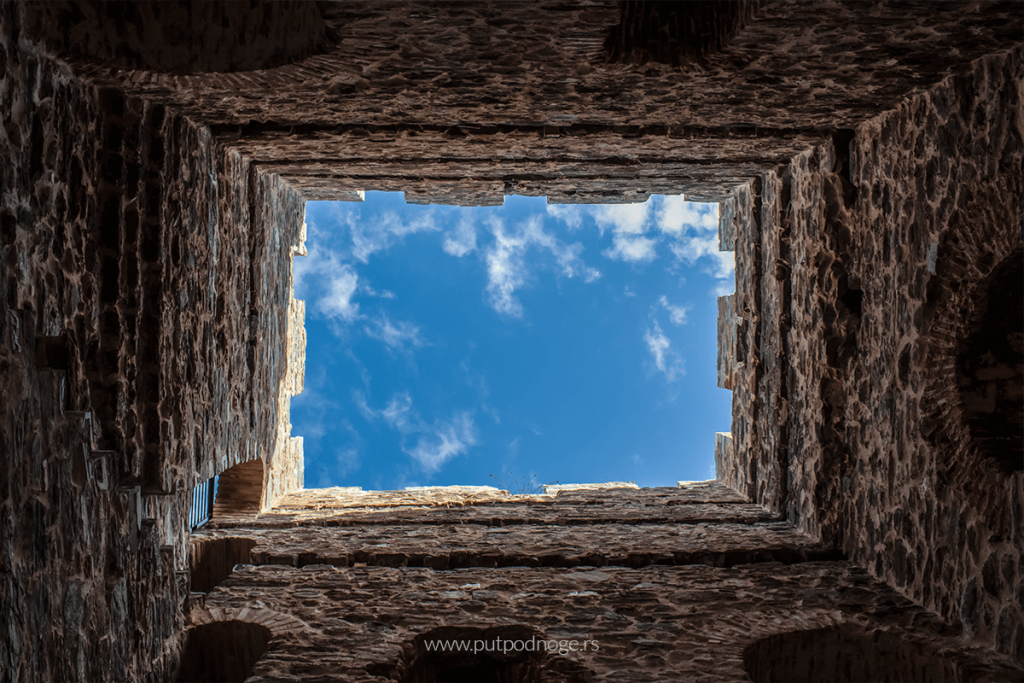
Ancient and Celtic Heritage of Ram
Ram Fortress is not just a medieval gem – the history of this site reaches far deeper into the past.
The Roman Road and Inscription Below Tower 5
Directly below the fortress once ran a Roman road, carved into the rock due to a lack of coastal space. It served to support ships and was used for an astonishing nineteen centuries. In the rock beneath Tower 5, a Roman inscription in Latin still survives:
“To Jupiter, the best and greatest of all gods, a vow made by Gaius Licinius Rufinus, standard-bearer of the 7th Claudian Legion.”
The Military Camp of Lederata
Two kilometers downstream from the fortress, on Gorica Hill, the Romans built the military camp of Lederata in the late 1st century as a base for the conquest of Dacia. There, the 7th Claudian and the 4th Flavian legions constructed a large pontoon bridge across the Danube.
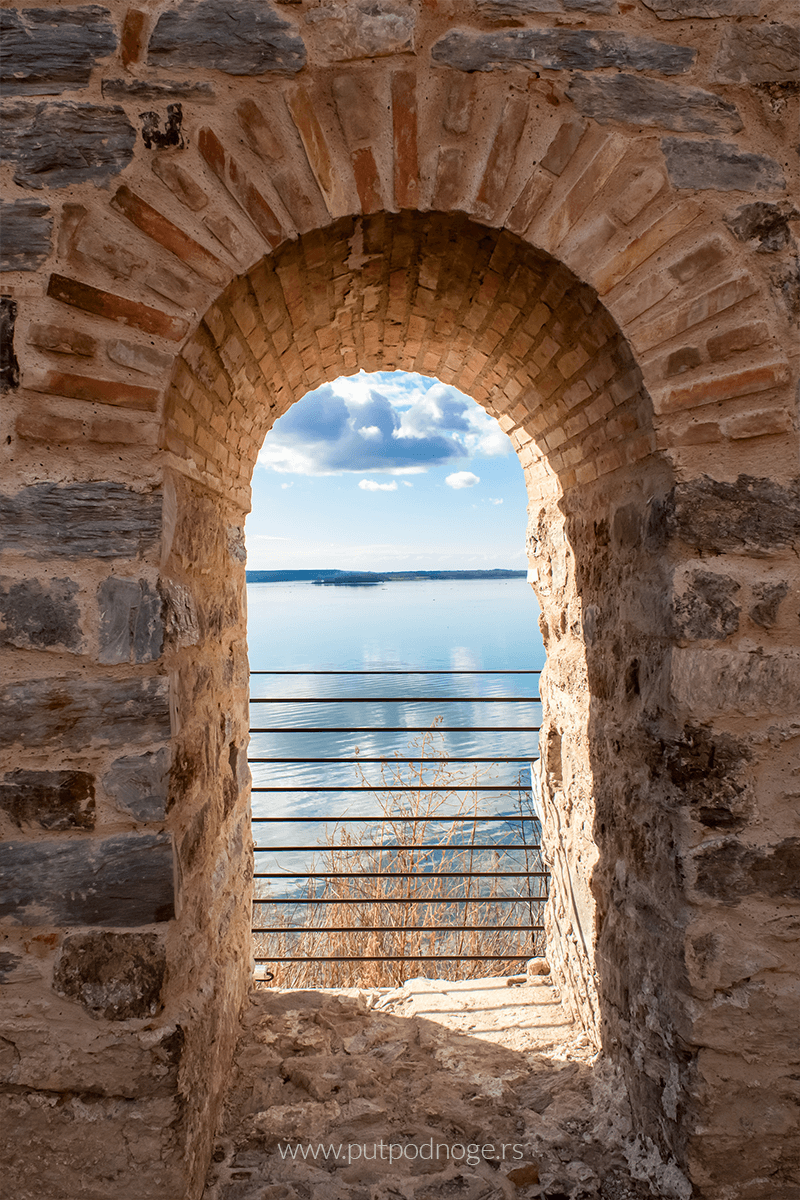
Celtic Traces and the Origin of the Name Ram
Before the Romans, the area was dominated by the Celts. Their fortified settlement – oppidum – was located east of the present-day village of Ram. On maps from the 15th to 17th centuries, the location is marked as Hram – a Celtic word for sanctuary. It is believed that the Celts chose this place because of the blue-green magmatic rocks, the same ones later used to build the fortress.
The Legend of Remus and Leticia
One legend tells of Remus, the brother of Romulus. After a quarrel, Remus and his beloved Leticia sought the most beautiful place to build a new home. On a high rock overlooking the calm Danube, beneath a red sunset, they decided to stay. They named the place after Remus – Ram. National Geographic declared sunsets in Ram among the most beautiful in Europe.
An Ancient Tomb and Circular Structure
Near the fortress lies an ancient-Byzantine structure with a circular base, 11 meters in diameter and walls 3.3 meters thick. The structure has no entrances or openings, was once covered by a dome, and protected by square ramparts. It is believed to be a sacred structure – a monumental tomb – though it remains unknown who was buried there.
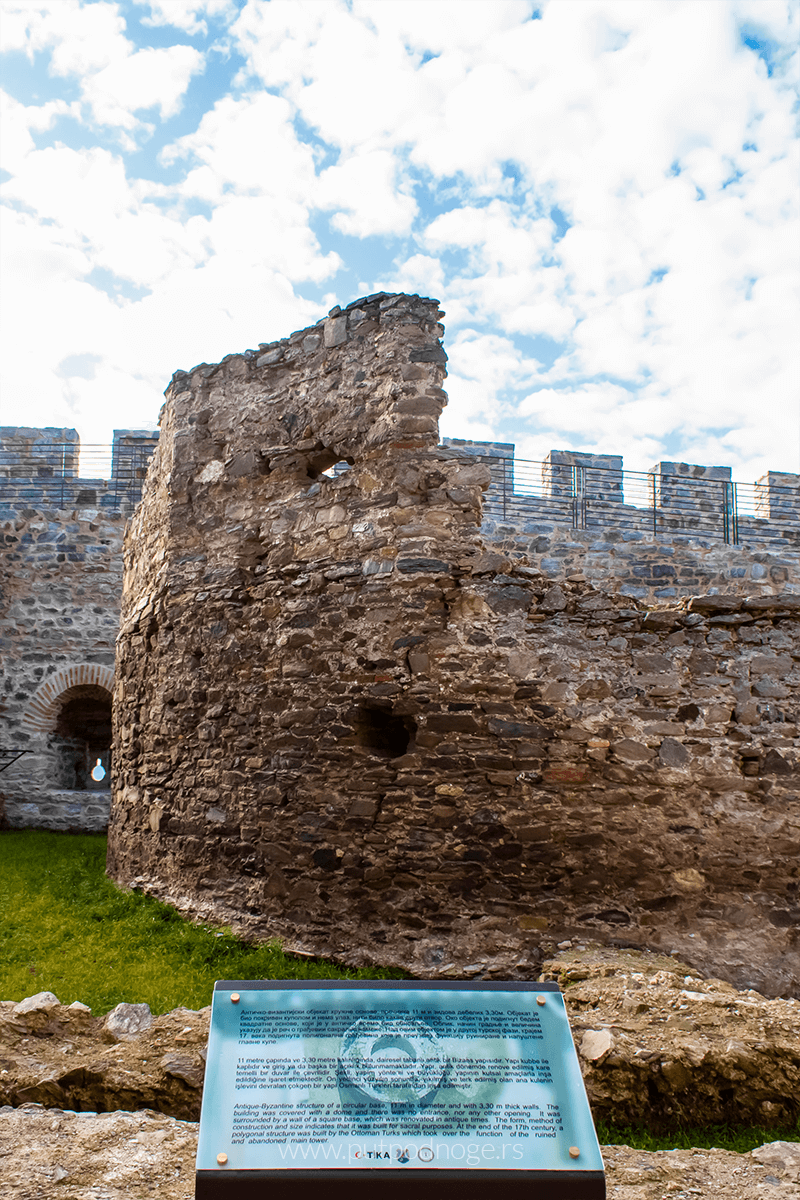
Caravanserai and Hammam
In the immediate vicinity of the fortress, remains of a 15th-century caravanserai and hammam have been discovered. The caravanserai from this period is among the few preserved examples of its kind in Serbia and stands as proof of Ram’s importance as both a trade and strategic location.
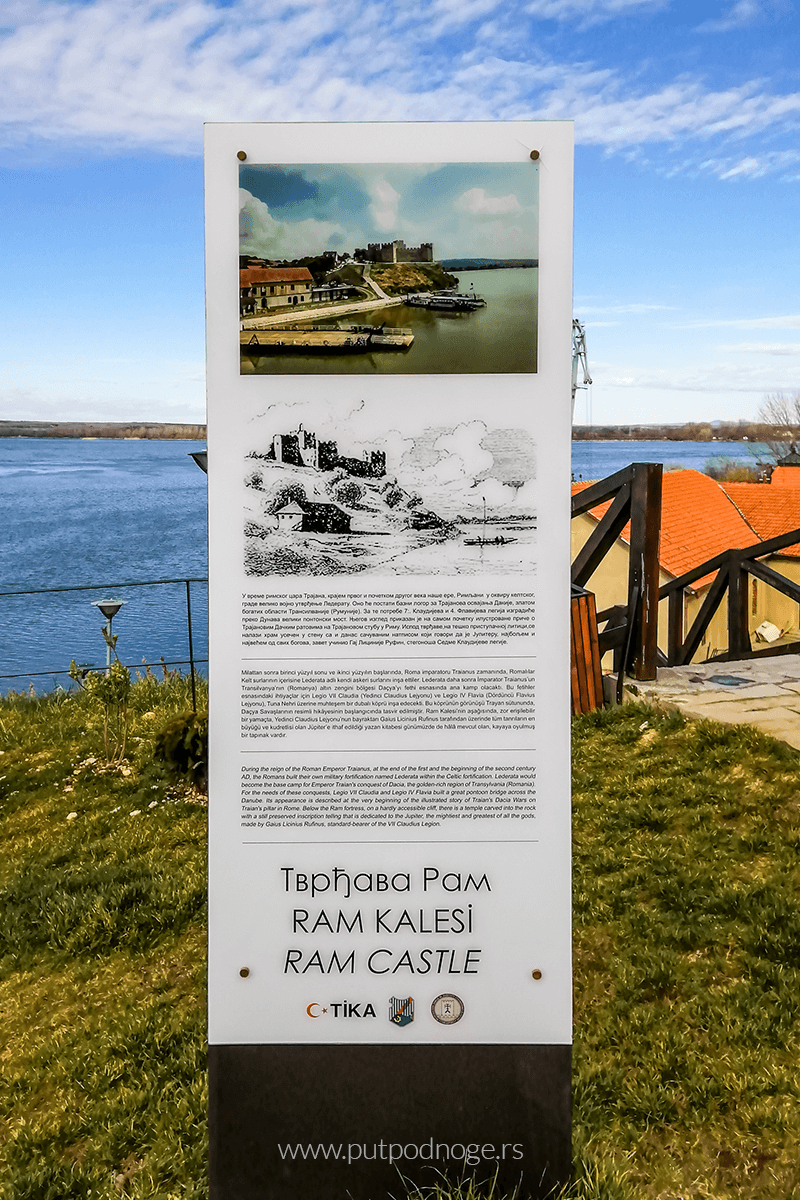
How to Get to Ram Fortress
Ram Fortress is located in eastern Serbia, in the village of Ram, about 110 km from Belgrade. The easiest way to reach it is by car, taking the road through Požarevac toward Veliko Gradište. The drive from Belgrade takes about an hour and a half to two hours, depending on traffic. After passing through Požarevac and turning toward Ram, follow the signs to the fortress, which is situated right on the banks of the Danube River. The area is well-maintained, with a parking lot close to the entrance, and a paved walking path leads directly to the fortress, making access easy and pleasant.
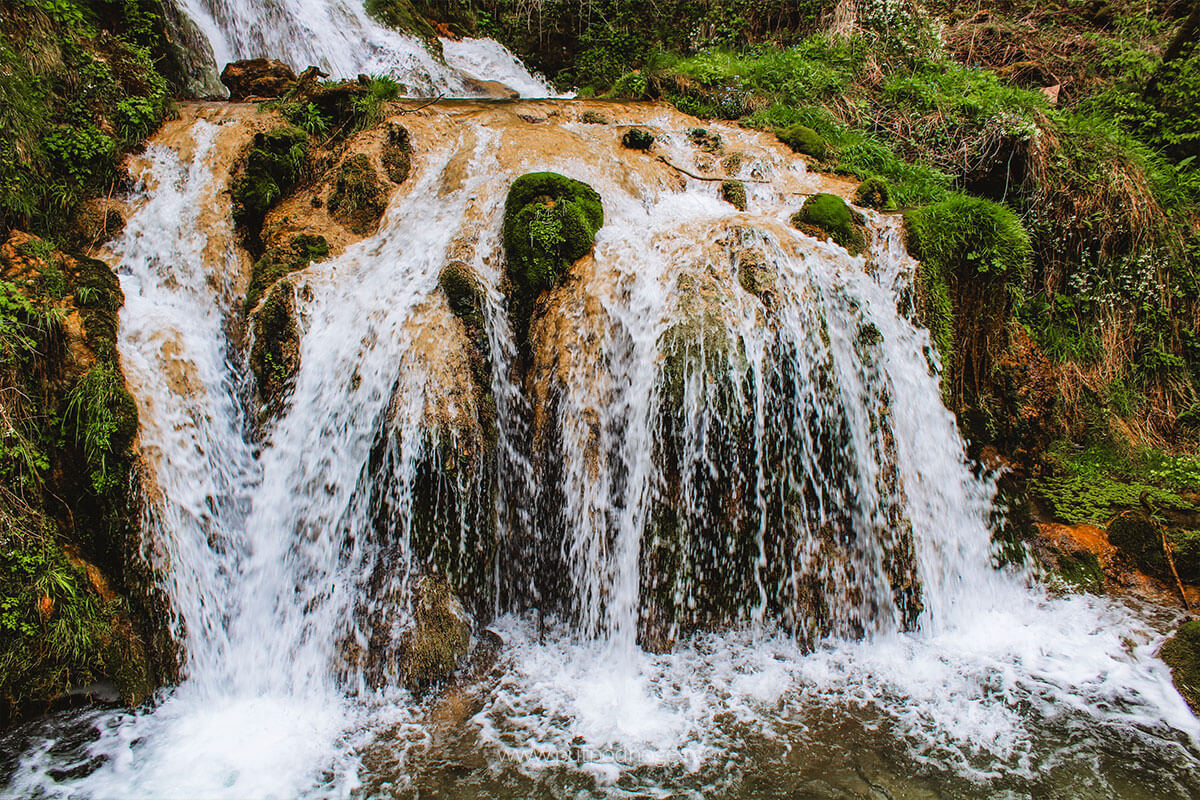
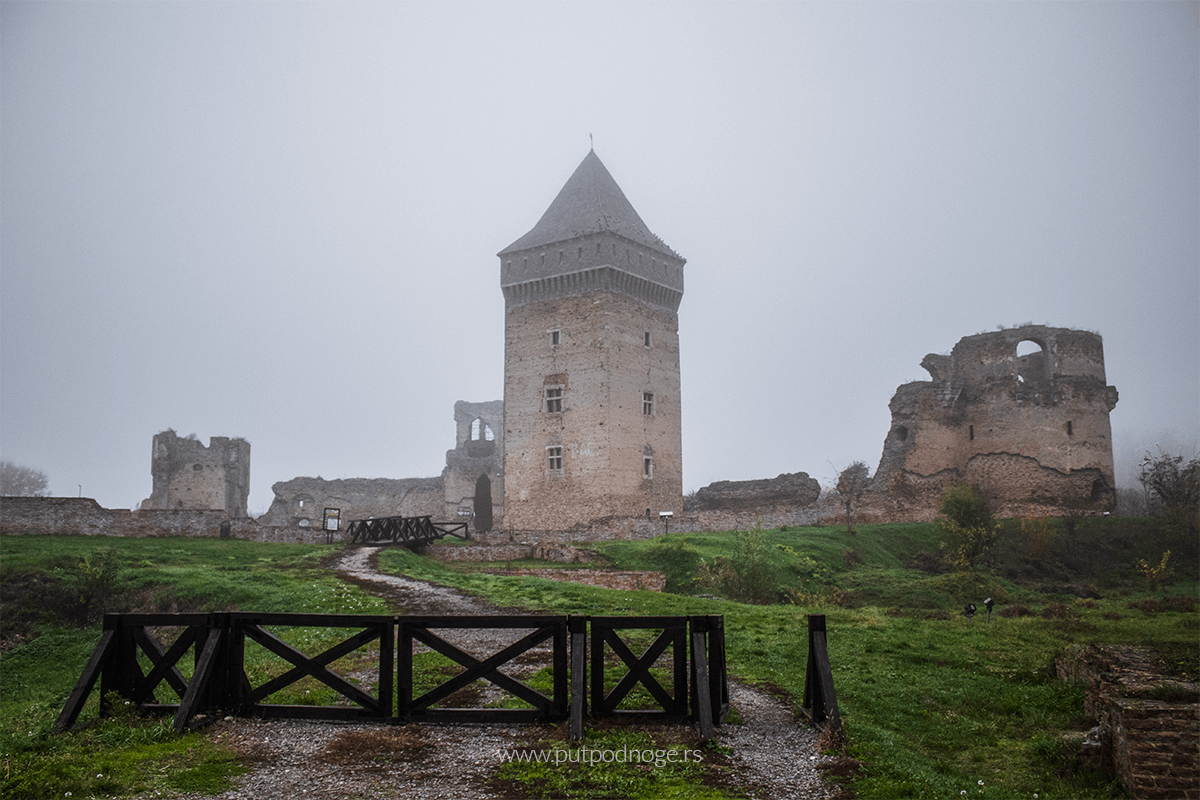
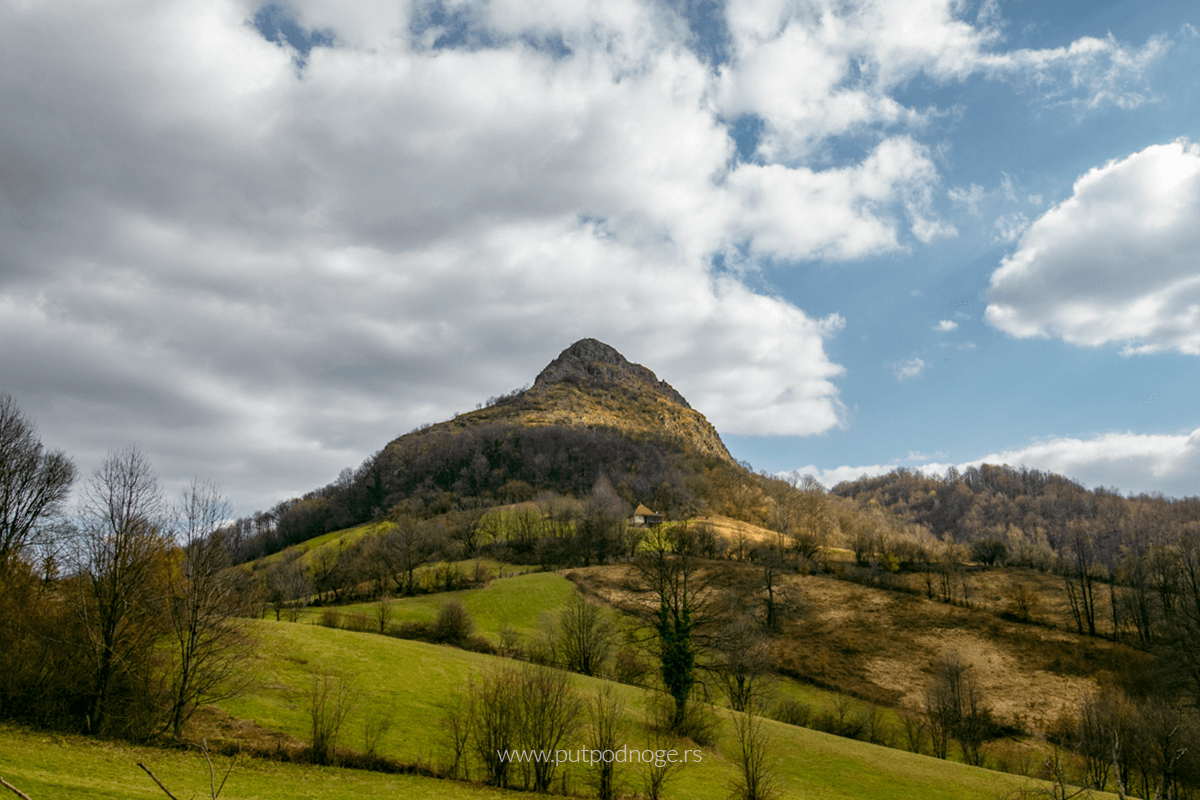
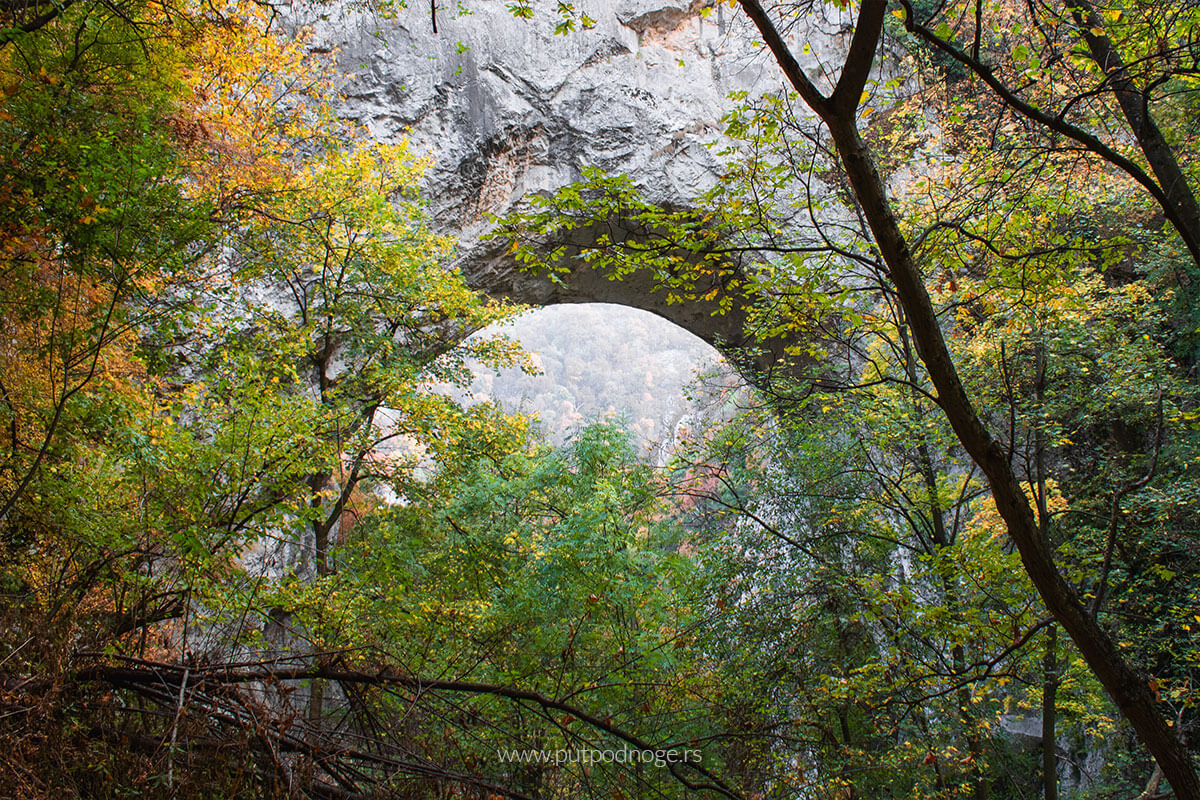
Leave a Reply